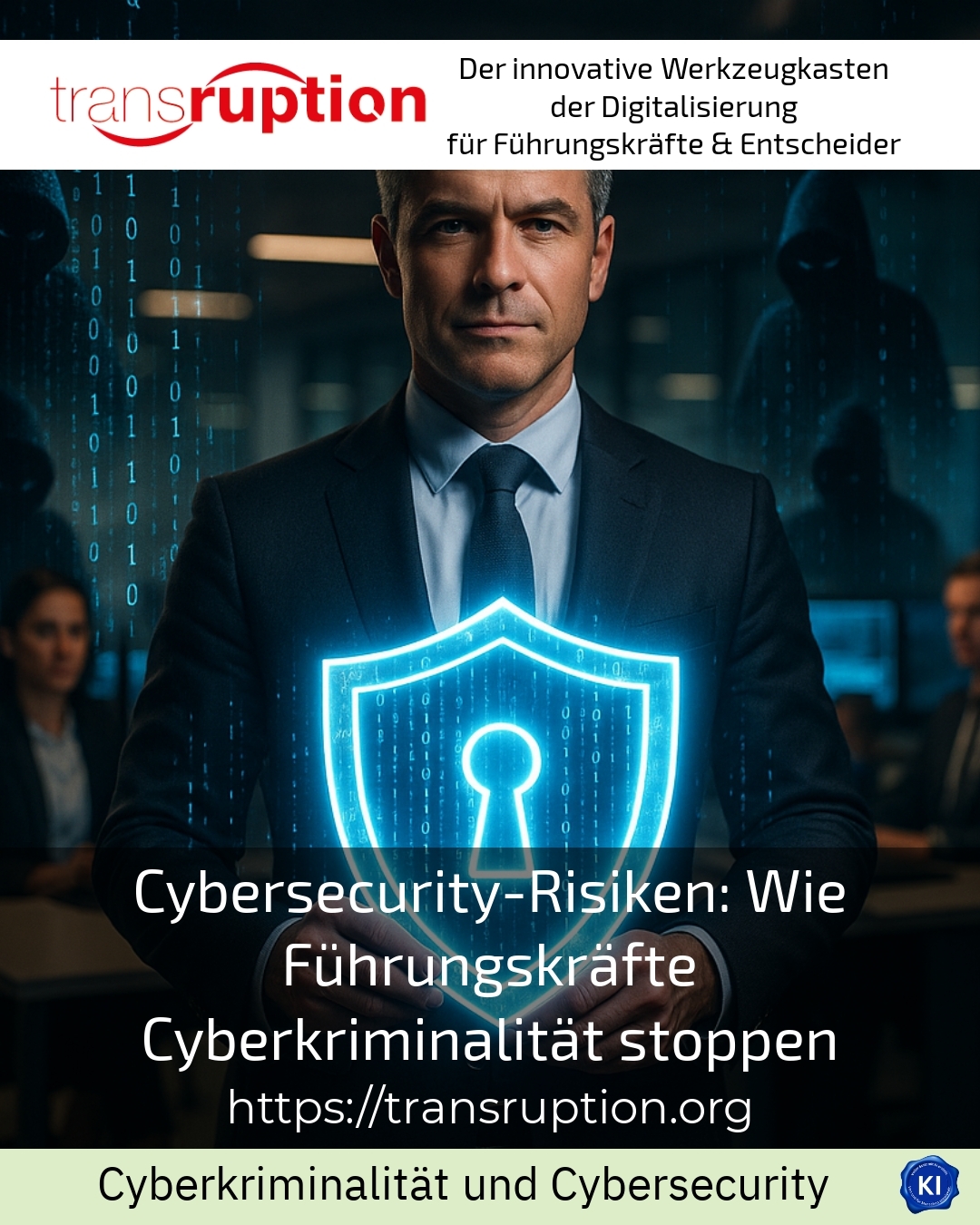Cybersecurity risks are a key issue for companies of all sizes today. Managers are faced with the challenge of protecting their organisations from digital threats. The dangers are manifold: from data leaks and ransomware attacks to phishing campaigns. Clients often report that they feel insecure when it comes to taking the right protective measures. transruptions coaching helps managers to respond to cybersecurity risks in a targeted manner and develop sustainable security strategies.
Why cybersecurity risks are so important
Cybersecurity risks can cause serious damage to companies. They lead to data loss, business interruptions and financial damage. Small and medium-sized companies are often particularly affected. Attacks are becoming increasingly complex and sophisticated. It is therefore important to deal with the risks at an early stage.
A real-life example: A medium-sized company received an email that looked like a normal invoice. An employee opened the attachment - and infected the entire network with malware. The result: weeks of downtime and high recovery costs.
Another example: A craft business was the victim of a phishing attack. The attackers pretended to be a bank and demanded the transfer of a large sum of money. Fortunately, the managing director realised the fraud in time.
A third example: a start-up lost sensitive customer data due to a security vulnerability in the software. The result was a loss of image and legal consequences.
Recognising and assessing cybersecurity risks
What types of cybersecurity risks are there?
Cybersecurity risks can be divided into different categories. These include data leaks, hacking incidents, malware attacks, phishing scams and ransomware threats. Each of these risk types requires a specific approach.
For example, a healthcare company discovered that sensitive patient data had been accessed via an insecure cloud solution. The cause was a lack of encryption.
Another example: A company in the financial sector was paralysed by a DDoS attack. The attackers overloaded the servers with requests and caused a complete breakdown of services.
A third example: A retail company was manipulated by social engineering. The attackers pretended to be employees and gained access to internal systems.
How do you assess cybersecurity risks?
Cybersecurity risks are assessed in several steps. Firstly, the critical assets and systems are identified. Then possible threats and vulnerabilities are analysed. Finally, the impact and probability of an attack is assessed.
An example: A company in the mechanical engineering sector carried out a risk analysis. It realised that its production data was particularly at risk. As a result, additional security measures were introduced.
Another example: A company in the service sector assessed the risks to its customer data. The analysis showed that phishing attacks posed the greatest threat. Training was then organised for employees.
A third example: a start-up in the tech sector assessed the risks for its software development. The analysis revealed that unsecured IoT devices posed a major risk. As a result, the devices were reconfigured and secured.
Minimise cybersecurity risks: Practical measures
Technical protective measures
Technical protective measures are an important part of the cybersecurity strategy. These include firewalls, anti-virus programmes, regular software updates and secure data encryption.
An example: A company in the retail sector used a modern firewall and regularly updated its software. This enabled it to successfully fend off several attacks.
Another example: A company in the healthcare sector encrypted all sensitive data. This prevented a data leak.
A third example: A start-up in the tech sector carried out regular security updates. This closed known security gaps.
Organisational measures
Organisational measures are just as important as technical protective measures. These include regular training for employees, clear security guidelines and effective incident management.
An example: A company in the service sector organised regular training courses for its employees. As a result, phishing attacks were recognised and fended off.
Another example: A company in the financial sector introduced clear security guidelines. This closed internal security gaps.
A third example: a start-up in the tech sector established an effective incident management system. This enabled attacks to be recognised and averted quickly.
Cybersecurity risks in focus: best practices
Best practices help to minimise cybersecurity risks in the long term. This includes regular risk analyses, continuous training and the involvement of all employees in the security strategy.
One example: A company in the mechanical engineering sector regularly carried out risk analyses. This enabled new threats to be recognised and averted at an early stage.
Another example: A company in the healthcare sector organised continuous training for its employees. This increased safety awareness.
A third example: A start-up in the tech sector involved all employees in the security strategy. This closed internal security gaps.
BEST PRACTICE at the customer (name hidden due to NDA contract) A medium-sized company in the mechanical engineering sector carried out a comprehensive risk analysis following a cyberattack. The results were communicated in regular training sessions for all employees. In addition, technical protective measures such as firewalls and anti-virus programmes were installed. The security guidelines were clearly defined and continuously updated. As a result, the company was able to successfully fend off several attacks and strengthen the security awareness of all employees.
My analysis
Cybersecurity risks are a constant challenge for companies. Managers must act proactively to protect their organisations. The combination of technical and organisational measures is crucial. Regular training and risk analyses help to identify and ward off threats at an early stage. transruptions coaching supports managers in responding to cybersecurity risks in a targeted manner and developing sustainable security strategies.
Further links from the text above:
Cyber security prevention measures
What is cyber risk management?
Organisational prevention of cyber attacks
What is cybersecurity risk management?
How to protect your company from cyber attacks
Cybersecurity: definition & recommendations from the expert
Cybersecurity transfer centre for SMEs
For more information and if you have any questions, please contact Contact us or read more blog posts on the topic TRANSRUPTION here.
















